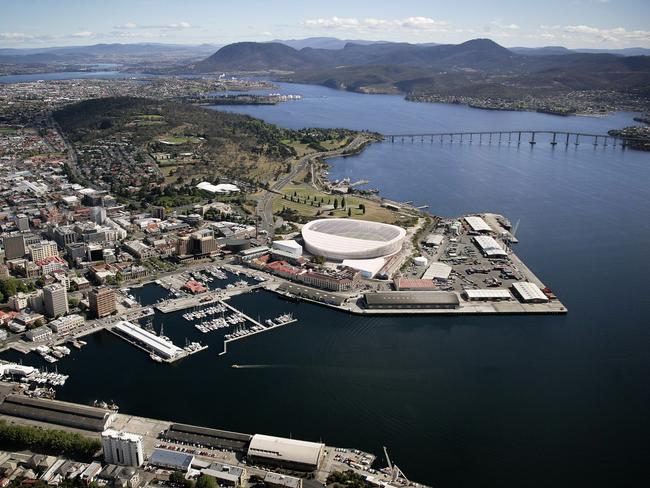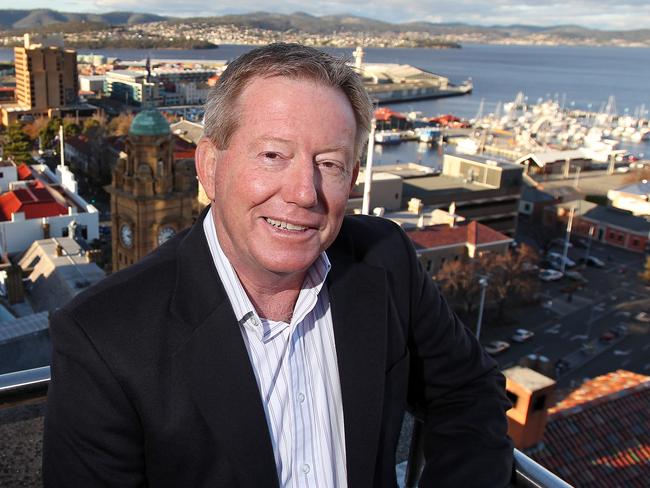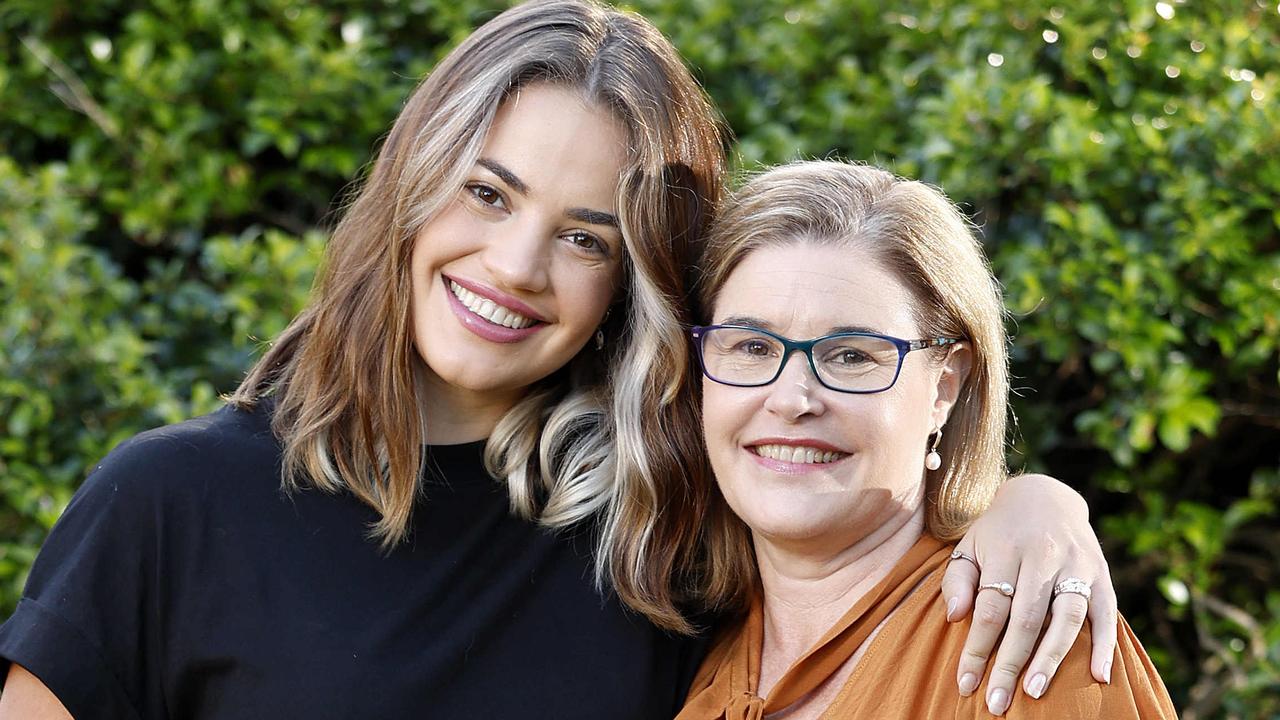Don’t hold back from investing in state’s future, says Cable Car Co. chair
It’s time to step up and embrace the Macquarie Point stadium and cable car proposals, writes Tony Mayell

Opinion
Don't miss out on the headlines from Opinion. Followed categories will be added to My News.
I have followed with a great deal of interest the recent range of articles that have focused on the proposed stadium development.
Spending time recently between Alice Springs, and regional Victoria and South Australia, I can confidently say that the social challenges that Tasmania faces, particularly in health, are no greater than elsewhere in our nation.
In respect to the argument about funding for the stadium versus channelling more into health, rather than people being angry and demanding an either or approach, surely we can work together to seize opportunities like the Mac Point precinct development that will deliver substantial economic benefits.
We need to create a state where elite sport and pathways from grassroots to their own centre stage, as reflected in world-class sporting and entertainment facilities, encourages more participation, community togetherness and a culture of physical activity and inclusion.
Most of the vocal critics pledge their support for an AFL team but ignore the reality of what is required for a team to exist and ultimately succeed in an elite competition. To simply say that Blundstone Arena is suitable, as the AFL plays there now, is simplistic and frankly naive.

The team and the stadium are inextricably linked. I suggest that if we forgo this opportunity now, we can forget about having the conversation again for decades.
The facts are that where other AFL franchises were established there were already suitable arenas in place that required a level of upgrading to bring them to the standard expected not only by the athletes competing in them but also the spectators. For example Carrara, the home of the Gold Coast Suns, required a $144m upgrade, of which the council contributed $23m recognising the benefits it would bring!
If government does not invest in infrastructure that will generate more revenue and income, can someone explain to me what these ever escalating costs to support essential services will be funded from?

You can’t keep spending what you haven’t got or earn.
The stadium is projected to contribute $85m per annum to the economy, with the AFL and AFLW teams generating a further $120m annually.
Which brings me to the Mount Wellington Cableway project. The cable car operation is projected to contribute up to $99m per annum, at no initial capital cost to the state.
Here is a project that is economically and environmentally responsible and sustainable, that will drive visitation and elevate Tasmania further as a must-see destination while providing an alternative, socially inclusive and cost-competitive transport option for everyone of all ages and abilities. Its design and routing reflect the significant community input actively sought by the company, as well as world’s best practice.
About 90 per cent of the shareholders are Tasmanians and expats and despite the cynicism about the make-up of this group, I can absolutely state that their commitment is driven primarily by a desire to provide a future asset for their kids, and every other young Tasmanian.

Outgoing Tourism Industry Council Tasmania chief executive Luke Martin recently reiterated the view that no one wants to see inappropriate development in protected areas and that any development on public lands, creating tourism, should be extremely high quality and highly regulated.
That view is shared by the proponents and shareholders of the Mount Wellington Cableway Company and reflected in its architectural design and values.
In response to his view that the cableway concept has monopolised the conversation, that may well be due to the lack of initiative by other parties, or a seemingly inherent reaction to simply attack anything that is brought to the table.
Mr Martin’s assertion that “where the cable car has gone wrong is that we’ve lost sight of what the problem is” – I counter with the view that some may have lost sight of the opportunity, and that the initiative shown by MWCC in identifying not only the problem but the opportunity that goes with that, should be not only be supported but applauded.
We agree with the position that the Mt Wellington Park Management Trust should be independently reviewed. We believe it is clearly under resourced and lacks the authority to determine and implement the best outcomes for the park relative to the current, and certainly the future, demand on the park infrastructure and experience.
This review should be conducted in parallel with, and not inhibit the progress of, the Mount Wellington Cableway Company project, or any other for that matter that meets the requirements of the management plan.

The cableway concept was developed in consideration of the Wellington Park Management Plan and received strong bipartisan support in both Houses of Parliament with ratification of the kunanyi/Mt Wellington Cable Car Facilitation Act 2017.
The commercial reality is that this $64m capital project funded by the private sector will generate 200 jobs during the construction phase and a further 60 full-time jobs once operational, cannot be put on the backburner again while another protracted review takes place.
The cableway project will not travel over any residential areas, it will reduce traffic and carbon emissions, and deliver high-quality levels of safety and amenity on the summit.
It certainly will not monopolise access to the summit, which is a medium-term probability with the alternative concept being developed by council.
For local Tasmanians it will offer transport at a lesser cost than the current ratepayer-subsidised bus service, which if it is to cater to expected demand will only increase future road traffic.
The cableway will provide rapid access and evacuation capability for emergency services and a redundancy option in the event of road closure due to weather or accidents, and scheduled events such as the Point to Pinnacle.
Shareholders have expended in excess of $4m to date to determine the most appropriate and feasible design, and work through the complex TASCAT process. There is some urgency to identify a pathway forward or this investment and opportunity will be lost to the state, its visitor economy, and to future generations of Tasmanians.
I am confident there is a significant support base for both the cableway and the Mac Point Entertainment and Sports Precinct – now is the time to step up and support the vision that the state must embrace.
I’d really like to hear from the Tasmanians that should be our priority – our younger demographic, including our children, who seem to not have the opportunity to contribute to the conversation.
The question must be asked – what do our young people see as important to tomorrow’s Tasmania and their own aspirations, and what must we invest in and focus on, to tie their future to this state?
These projects are for young Tasmanians who dream and aspire to have a future they can be proud of.
A cableway that demonstrates our renewable, sustainable credentials, funded by Tasmanians that back their vision and desire to create something for future generations.
An entertainment and sports precinct providing all Tasmanians the opportunity to compete in elite sports, attend world-class events, and participate in the performing arts.
We believe that Tasmania is at a crucial juncture. Do we invest in our state’s future and our young people, or do we allow them both to be held back for generations to come?
Tony Mayell is the executive chair of the Mount Wellington Cableway Company and former chief executive of Tourism Tasmania.




